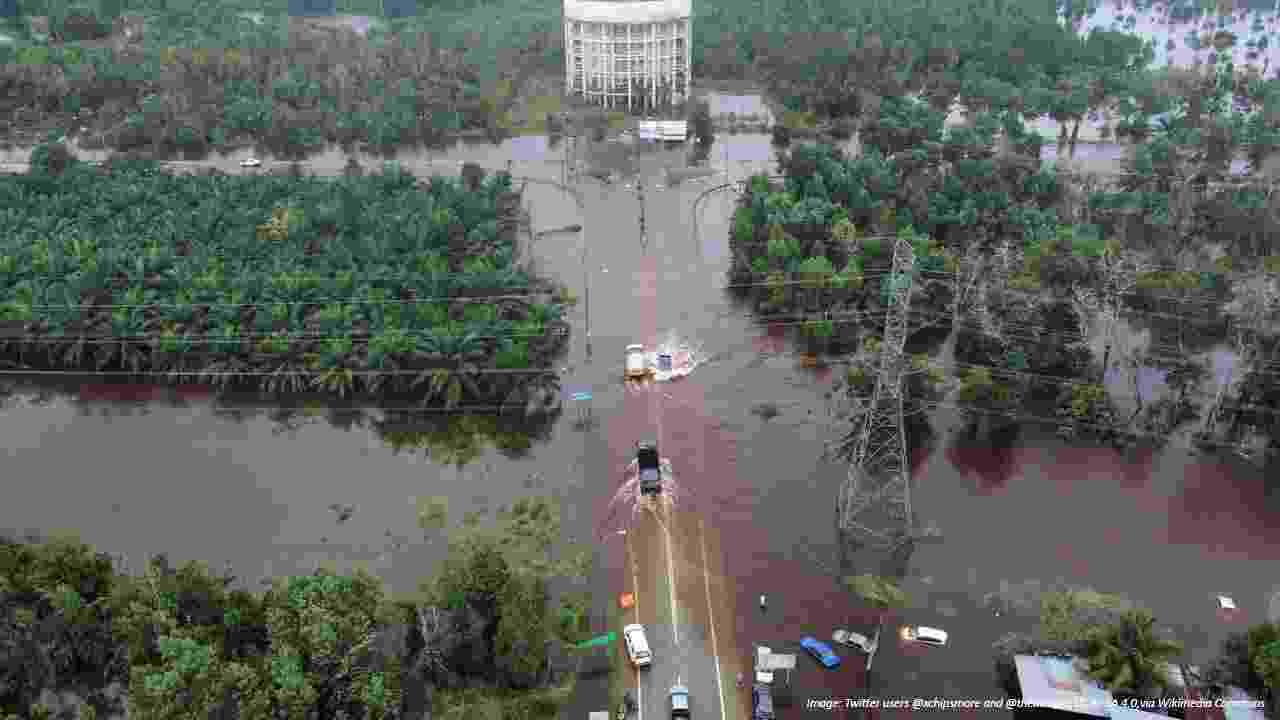Evaluating Imputation Methods for rainfall data under high variability
In Johor River Basin, Malaysia
10 December 2023


Flooding in Kuantan, Pahang, December 2021
Authors: Zulfaqar Sa’adi, Zulkifli Yusop, Nor Eliza Alias, Ming Fai Chow, Mohd Khairul Idlan Muhammad, Muhammad Wafiy Adli Ramli, Zafar Iqbal, Mohammed Sanusi Shiru, Faizal Immaddudin Wira Rohmat, Nur Athirah Mohamad, Mohamad Faizal Ahmad
Missing values in rainfall records might result in erroneous predictions and inefficient management practices with significant economic, environmental, and social consequences. This is particularly important for rainfall datasets in Peninsular Malaysia (PM) due to the high level of missingness that can affect the inherent pattern in the highly variable time series. In this work, 21 target rainfall stations in the Johor River Basin (JRB) with daily data between 1970 and 2015 were used to examine 19 different multiple imputation methods that were carried out using the Multivariate Imputation by Chained Equations (MICE) package in R. For each station, artificial missing data were added at rates of up to 5%, 10%, 20%, and 30% for different types of missingness, namely, Missing Completely At Random (MCAR), Missing At Random (MAR), and Missing Not At Random (MNAR), leaving the original missing data intact. The imputation quality was evaluated based on several statistical performance metrics, namely mean absolute error (MAE), root mean square error (RMSE), normalized root mean square error (NRMSE), Nash-Sutcliffe efficiency (NSE), modified degree of agreement (MD), coefficient of determination (R2), Kling-Gupta efficiency (KGE), and volumetric efficiency (VE), which were later ranked and aggregated by using the compromise programming index (CPI) to select the best method.
The results showed that linear regression predicted values (norm.predict) consistently ranked the highest under all types and levels of missingness. For example, under MAR, MNAR, and MCAR, this method showed the lowest MAE values, ranging between 0.78 and 2.25, 0.93–2.57, and 0.87–2.43, respectively. It also consistently shows higher NSE and R2 values of 0.71–0.92, 0.6–0.92, and 0.66–0.91, and 0.77–0.92, 0.71–0.93, and 0.75–0.92 under MAR, MCAR, and MNAR, respectively. The methods of mean, rf, and cart also appear to be efficient. The incorporation of the compromise programming index (CPI) as a decision-support tool has enabled an objective assessment of the output from the multiple performance metrics for the ranking and selection of the top-performing method. During validation, the Probability Density Function (PDF) demonstrated that even with up to 30% missingness, the shape of the distribution was retained after imputation compared to the actual data. The methodology proposed in this study can help in choosing suitable imputation methods for other tropical rainfall datasets, leading to improved accuracy in rainfall estimation and prediction.
Highlights:
- 19 multiple imputation methods from MICE were compared.
- MCAR, MAR, and MNAR with up to 30% missingness was considered.
- Norm. predict method is the best under all types and levels of missingness.
Images:
'Kuantan during December 2021 Malaysian floods', by Twitter users @xchipsmore and @thelivingtr, CC BY-SA 4.0, via Wikimedia Commons



